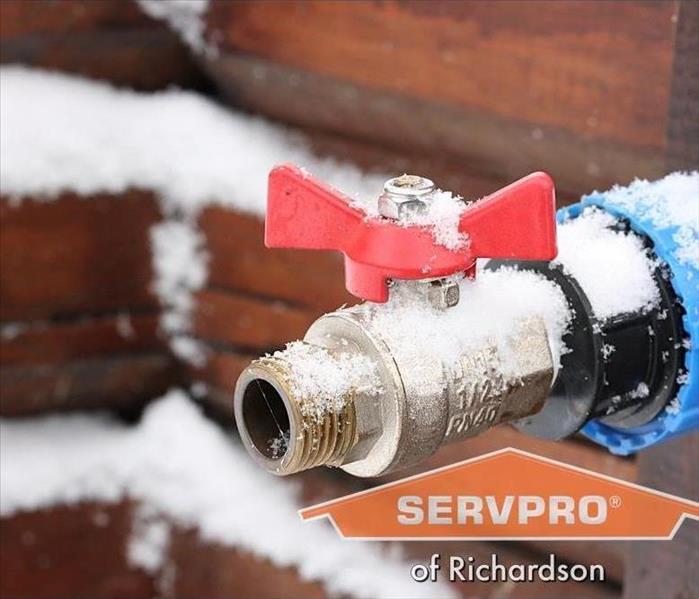How to Unfreeze Pipes this Winter
2/10/2022 (Permalink)
 If a pipe bursts as it unfreezes this winter, it’s vital to call a company specializing in water damage restoration.
If a pipe bursts as it unfreezes this winter, it’s vital to call a company specializing in water damage restoration.
Turning the faucet on a cold winter’s morning only to find a trickle of water usually means one thing — frozen pipes. The major problem with an ice blockage in your plumbing system usually happens when you try to unfreeze the pipes. Water expands as it turns to ice. This can cause a crack or split the water lines. Then when the frozen water pipe thaws, a major leak can happen, resulting in expensive damage to repair.
How can you unfreeze pipes this winter if they have frozen? How can you avoid a major flood in your house as the ice in the pipes melts?
This article contains helpful tips on unfreezing pipes and preventing significant water damage when they thaw.
4 Ways to Unfreeze Pipes
Unfreezing a pipe requires finding where the blockage is located, applying some gentle heat, and being ready to clean up any water leakage. However, it can be tricky to find the frozen pipe if it’s in a wall, crawl space, or another hard-to-reach place.
1. Turn off the Main Shutoff Valve
Before attempting to thaw a frozen pipe, the first step is to turn off the main water valve. Doing this prevents a deluge of water from pouring out a pipe if it bursts.
2. Keep the Faucet Open
The next step to unfreeze a pipe is to open the faucets. Allowing the water to flow freely prevents water pressure from building up between the ice blockage and the faucet. This step is the best way of avoiding a burst pipe as it thaws and water pressure returns.
3. Locate the Frozen Section of Pipe
You will now have to locate where the ice blockage has occurred. To do this, you will need to do some detective work. For example, if only one faucet appears blocked, inspect the water lines back from that point. However, if there is no water flow in the house, you must check where the water enters the building.
You can look for condensation or frost on water pipes to find the blockage. It’s also helpful to tap pipes and listen if the sound is solid or hollow. Or you can use your hand to feel where the water line is its coldest.
4. Apply Heat to the Frozen Pipe
There are three suitable ways to unfreeze a pipe. First, you could use a heat lamp or a portable space heater to increase the air temperature around the blockage. Or you can use a hairdryer on a warm setting and gently thaw the ice in the pipe. Another heat source is an electric heating pad or heat cable to melt the ice in the frozen water pipe.
Top tip when unfreezing pipes: Always start from the faucet end of the ice blockage and work back. This prevents tremendous pressure from building up in the pipe.
What To Do if Pipes Burst This Winter?
If a pipe bursts as it unfreezes this winter, it’s vital to call a company specializing in water damage restoration. Cleaning up after a flood isn’t just about removing excess water. It’s crucial to use specialized drying equipment to prevent water damage that results in mold growth or structural issues.
Contact SERVPRO of Richardson (972) 690-1414 today if a burst pipe has caused water damage. Our Richardson water damage restoration services can mitigate all the harmful effects of a flood in your home.






 24/7 Emergency Service
24/7 Emergency Service